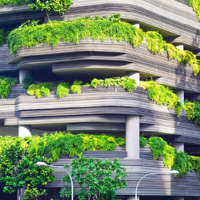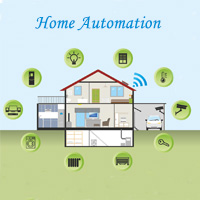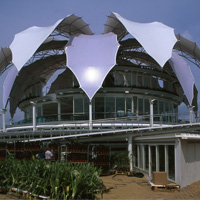Modernize the Present ...Inspire the Future
Buildings comprise a major part of the world's energy requirements. About 50 per cent of the energy is wasted due to inefficient energy management of the total energy consumed by buildings.
The factors like increase in population, rising energy prices and shrinking budgets worldwide, have led to the requirement of energy efficient, sustainable and smart buildings.
Currently, the various systems present in buildings constitute inefficient functions in them. The growing trend of green operations took a huge step in energy efficiency, security, connectivity and sustainability which have given rise to the need for smart buildings.

The market for smart buildings is driven by various factors. According to the growing trend, there is an evolving consumer mindset and an increasing demand for environmentally safer and sustainable buildings.
The smart buildings are considered to have lower lifecycle costs due to automation and control systems, which is an additional feature to be considered. Industry rates suggest that smarter buildings can save building life-cycle costs by 20 per cent and it has become a mandatory regulation for energy efficiency in commercial buildings, to manage water scarcity and usage of power.
As these factors become focal points in any building, India is expected to become one of the largest construction markets in the world by 2020. As we can see now, there is already growing convergence between building systems and IT systems.
A new trend has been set by Corporate India, to adopt Green Buildings to save additional and overhead costs by reducing energy and water costs.
Components of a Smart building:
One of the most important aspects of a smart building is lightening control, which is the easiest way to save energy costs. It is proved that a well- organised lighting control system can reduce up to 50 per cent of energy costs.
The day lighting controls system includes natural light to meet a required light level, which leads to harvesting renewable sunlight to achieve sustainability.
The dimming and scene controls provide convenient and comfortable lighting to make the building energy efficient by reduced consumption and cost.

The second aspect of the solution is the Building Management System (BMS), which is the brain of the building and brings various systems together to operate as a single system.
This integrated approach to the building will further reduce energy usage by 30 per cent, and also decreases the total cost of ownership, operating expenditures thereby improving overall business performance.
The intelligent BMS enables monitoring, measurement, and optimization of the building's performance throughout its life-cycle and also provides insights across all the critical systems in the buildings for intelligent actions.
The innovative solutions for smart buildings include quick response systems, automation, smart meters, smart panels and building analytics services.
Below are some key components of a smart building:
Life Safety
- Fire alarm system
- Fire suppression system (dry, wet)
- VESDA system
- Paging system
Security System
- Access control
- CCTV system
- Intrusion system
- Perimeter protection
- Gate automation
Building Management system (BMS)
- Chiller management
- HVAC system (heating, ventilating and air conditioning)
- Ventilation system - Energy metering
- Lighting control
Utility services
- DG set monitoring
- Elevator control
- Water leak system
- Waste water management
Advantages of Smart Buildings
Smart buildings result in several benefits including high performance, energy efficiency, reduction in expenses, positive returns, and also improving occupant comfort and safety.

Therefore, the concept of smart buildings is designed to harvest savings throughout the buildings life-style and to make it profitable. Besides, increase in population towards city areas, smart buildings form a crucial part of smart cities thereby achieving energy efficiency and sustainability.
The only challenge is the high initial investment and becoming compatible with existing infrastructure makes it difficult.
Check Out: Benefits of Green Buildings in Construction

















brihasparhi
posted on Mar 12, 2020 6:40:03 PMmanagement systems and CCTV cameras, security systems, access control.
People always want to learn something by reading post Keep learning and keep sharing. Anyways, that's amazing Keep up the great work. All the best!!!!